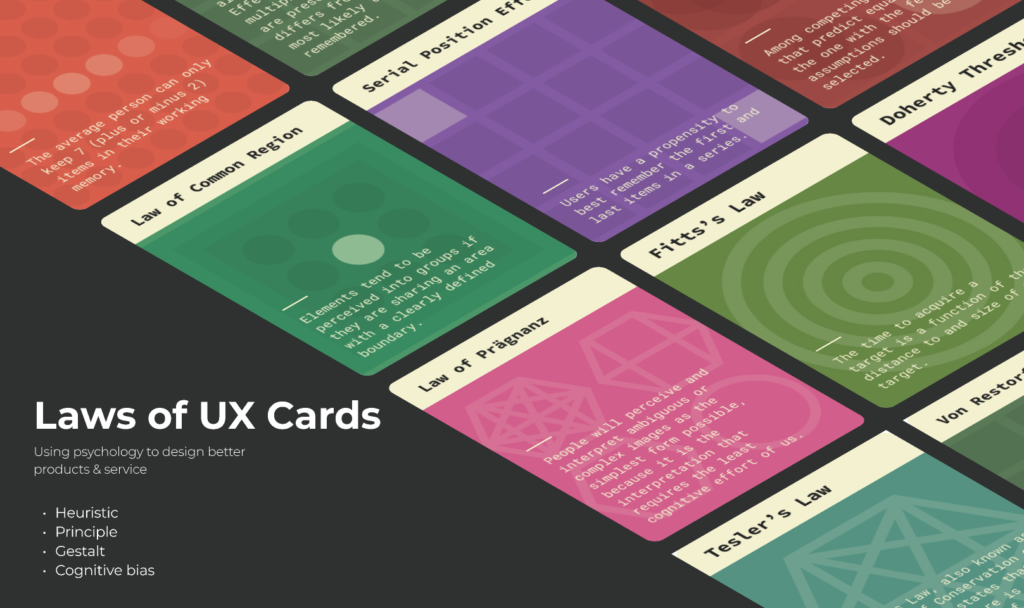
The 12 Laws of UX is a concept introduced by Jon Yablonski, a product designer based in Detroit Michigan. Laws of UX are a set of principles that designers can follow to create a User Experience (UX) that is effective, intuitive, and user-friendly. They can be applied to a wide range of products and services. Some of the Important Laws of UX include:
1. Hick’s Law:
Hicks law or the Hick-Hyman law describes the time it takes to make a decision increases with the number and complexity of choices and the law suggests that keeping the interface simple and minimizing choice improves decision making.
2. Fitts’s Law:
Fitts’s Law established the time to acquire a target. Such as the time it takes to move a cursor to a target on screen is affected by the size and distance of the target.
3. Law of Proximity:
Elements that are closed together or proximate to each other, tend to be grouped together. This law can be used to create a visual hierarchy and guide users’ attention.
4. Law of Similarity:
It tends to perceive similar elements in a design. This law can be used to create consistency in a design and to group related items together.
5. Miller’s Law:
The law suggests that the average person can grasp 7 items in their short-term memory at a time. The interface should be designed to minimize the amount of information that users have to remember.
6. Aesthetic-usability Effect:
This Principle suggests that the effect is a phenomenon where users often perceive attractive designs as being more usable. In other words, if a product looks good, users are more likely to believe that it will be easy to use.
7. Doherty Threshold:
It states that productivity increases when the computer and its user interact at a step within 400ms. This means the user should not have to wait for the system to respond to their actions.
8. Jacob’s Law:
Jacob’s law is also known as “Jacob’s law of the Internet user experience”. Users spend their time on other sites. Align your interface conventions with what users are already familiar with to enhance usability.
9. Law of Common Region:
Elements that are grouped are perceived as belonging together. This law can be used to organize information on a screen in a way that is easy to understand.
10. Law of Pragnanz:
People naturally tend to perceive complex patterns as simple and organized wholes. This law suggests that design should be visually clear and concise.
11. Occam’s Razor:
Occam’s razor or Ochham’s razor is the simplest solution is usually best. This law suggests that the interface should be designed to be as simple and easy to use as possible.
12. Law of Uniform Connectedness:
Elements that are connected visually are perceived as being related. This law is used to show the relationship between different parts of the interface.
Very Nice blog